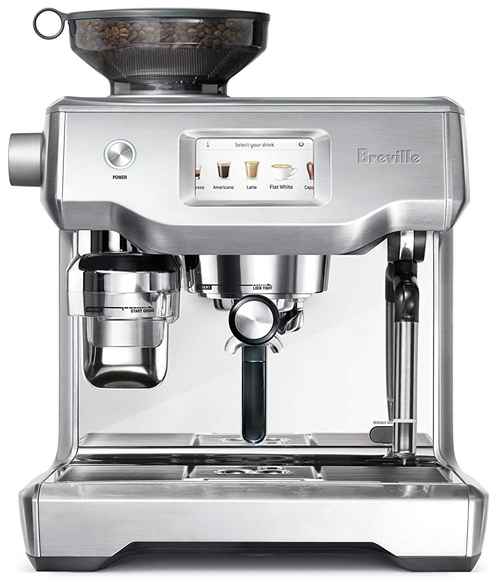Basic Matcha Tea Latte Recipe [+Tips]
Note: This page contains affiliate links.
As an Amazon Associate, I earn from qualifying purchases when you click on the link, but you are not charged extra.
Oh, matcha tea latte – where have you been all my life? If you’re anything like me, you’ve probably fallen head over heels for that vibrant green drink that’s as visually stunning as it is delicious. But what exactly is matcha? Well, it’s a finely ground powder made from specially grown green tea leaves, traditionally whisked into hot water to create a rich, frothy cup of umami goodness. The magic of matcha lies not just in its vibrant color but in the unique flavor profile – earthy, slightly sweet, with a hint of natural bitterness that balances beautifully when combined with creamy milk.
- Old World Christmas Beans: Tastes like the holidays in every cup — discover the cozy magic of Old World Christmas Beans before the season slips away.
- Kirkland Sumatra French Roast : Dark, bold, and wildly smooth—why Kirkland’s Sumatra French Roast is the best-kept secret of serious coffee drinkers.
- Hot Fudge Whole Bean Coffee : What happens when dessert meets coffee? Meet the decadent whole bean that tastes like hot fudge—but better.
- Aroma Ridge Guatemala Antigua Medium Roast : From the highlands of Guatemala to your morning mug—this rich, balanced roast is waking up coffee lovers everywhere.
- Juan Valdez Cumbre Colombian Coffee : Crafted by Colombia’s most iconic coffee legend—why Cumbre is a must-try for fans of bold, authentic flavor.
Now, the matcha tea latte takes this ancient tea tradition and adds a luscious, creamy twist. Think of it as a cozy hug in a cup, blending the bold, grassy notes of matcha with the velvety smoothness of steamed milk. Perfect for mornings, afternoon pick-me-ups, or even a soothing nighttime ritual if you choose the right milk!
In this guide, I’ll walk you through everything from the must-have ingredients to foolproof steps for making a basic matcha tea latte at home. Plus, I’ll sprinkle in expert tips and cool recipe twists to keep things exciting. So, grab your whisk and let’s get started!
- 1 Ingredients For Basic Matcha Tea Latte Recipe
- 2 How To Make Basic Matcha Tea Latte?
- 3 Expert Tips
- 4 Recipe Variations
- 5 Final Words
- 6 FAQs
- 6.1 What Ingredients Do I Need For A Basic Matcha Tea Latte?
- 6.2 How Do I Prepare Matcha Powder For A Latte?
- 6.3 What Type Of Milk Works Best For A Matcha Latte?
- 6.4 How Hot Should The Water Be For Preparing Matcha?
- 6.5 Can I Make A Matcha Latte Without A Whisk?
- 6.6 How Much Sweetener Should I Add To A Matcha Latte?
- 6.7 Can I Prepare A Matcha Latte Iced Instead Of Hot?
- 6.8 Is It Necessary To Sift Matcha Powder Before Use?
- 6.9 How Do I Store Matcha Powder To Keep It Fresh?
- 6.10 What Are Some Common Variations Of A Basic Matcha Latte?
Ingredients For Basic Matcha Tea Latte Recipe
Here’s where things get fun – gathering your matcha latte essentials! For a simple, yet authentic matcha tea latte, you’ll want to keep it straightforward but quality-focused. Here’s what you need:
-
Matcha Powder
- Go for ceremonial-grade matcha if you want that pure, vibrant taste with less bitterness.
- Culinary-grade matcha works too if you’re on a budget or using it in blended recipes, but the flavor is a bit less refined.
-
Milk Of Choice
- Dairy milk (whole or 2%) for a creamy, rich latte.
- Plant-based milks like almond, oat, soy, or coconut offer different flavor notes and are great for dairy-free options. Oat milk is especially popular for its natural creaminess.
-
Sweetener (optional)
- Honey, agave syrup, maple syrup, or simple sugar – depending on how sweet you like it.
- Remember, matcha itself has a delicate sweetness, so don’t go overboard!
-
Hot Water
- Just under boiling (about 175°F or 80°C) – too hot and you risk burning the matcha, which makes it bitter.
-
Optional Extras
- Vanilla extract or a pinch of cinnamon or nutmeg for extra warmth and complexity.
How To Make Basic Matcha Tea Latte?
Alright, now for the fun part – making the latte! It’s surprisingly easy and super satisfying. Follow these steps for a silky smooth cup:
-
Sift Your Matcha Powder
- Use about 1 to 2 teaspoons of matcha powder. Sifting it through a fine mesh sieve breaks up clumps and ensures a smooth, lump-free drink.
-
Add Hot Water
- Pour around 2 ounces (about 60 ml) of hot water at roughly 175°F (80°C) into your cup or bowl with the sifted matcha.
-
Whisk Vigorously
- Use a traditional bamboo whisk (chasen) if you have one, or a small electric frother. Whisk in a zigzag motion until you get a foamy, bright green liquid. This can take about 15-30 seconds.
-
Heat And Froth Your Milk
- Warm about 6 ounces (180 ml) of your chosen milk. You can do this on the stove or with a milk frother. Froth it until it’s nice and creamy with a light foam on top.
-
Combine
- Pour the frothed milk into the matcha mixture gently, holding back the foam with a spoon. Then, spoon the foam on top for that classic latte look.
-
Sweeten To Taste
- Add your sweetener and stir gently. Taste and adjust – it’s your latte after all!
-
Enjoy!
- Sip slowly, savoring that unique balance of grassy, creamy, and subtly sweet flavors.
Expert Tips
Here’s where things get really interesting – because making matcha latte is as much art as science, these pro tips will elevate your game:
-
Water Temperature Matters
Using boiling water scorches the delicate matcha powder, making it bitter and losing those vibrant antioxidants. Always let boiling water cool for a minute or two before whisking.
-
Matcha Storage
Matcha powder oxidizes quickly when exposed to air and light. Store it in an airtight container in a cool, dark place, preferably in the fridge, to keep it fresh and bright.
-
Whisking Technique
The secret to a frothy matcha latte is the whisk motion – it’s all about the rapid ’M’ or ’W’ shape movements, not just stirring in circles.
-
Milk Matters
For vegan lattes, oat milk tends to froth and blend best with matcha’s flavor. Almond milk is lighter but less creamy; coconut milk adds a tropical twist but can overpower.
-
Sweetener Selection
Avoid artificial sweeteners as they can clash with the natural flavors. Natural syrups and honey work beautifully.
-
Matcha Quality Check
High-quality matcha has a vibrant emerald green color, a fresh grassy aroma, and a slightly sweet, umami flavor. If your powder looks dull or yellowish, it might be lower grade or stale.
Recipe Variations
Feeling adventurous? Here are some tasty spins on the basic matcha tea latte to keep your taste buds dancing:
-
Iced Matcha Latte
- Whisk matcha with a splash of hot water, then pour over ice and add cold milk. Refreshing for summer!
-
Vanilla Matcha Latte
- Add 1/2 teaspoon vanilla extract for a smooth, dessert-like flavor.
-
Spiced Matcha Latte
- Sprinkle in ground cinnamon, cardamom, or a pinch of ginger for a warming, chai-inspired twist.
-
Matcha Coconut Latte
- Use coconut milk and a drizzle of coconut syrup for a tropical vibe.
-
Matcha Turmeric Latte
- Mix in a pinch of turmeric powder for anti-inflammatory benefits and a golden-green color combo.
-
Sweetened Condensed Milk Matcha
- For a richer, sweeter treat, add a splash of sweetened condensed milk, popular in some Asian-inspired recipes.
Final Words
Making your own matcha tea latte at home is not only incredibly satisfying but also a beautiful way to connect with a centuries-old tradition. It’s a drink that’s as versatile as it is vibrant, offering endless opportunities to tailor it to your taste, dietary needs, and mood. Whether you prefer it hot and cozy or chilled and refreshing, matcha latte is a wonderful canvas for creativity, nutrition, and enjoyment.
Don’t worry if your first few tries aren’t perfect – like any craft, it takes a little practice to master the whisk and get your ideal balance of matcha and milk. But once you do, you’ll wonder how you ever lived without your daily green boost!
FAQs
What Ingredients Do I Need For A Basic Matcha Tea Latte?
For a basic matcha tea latte, you need high-quality matcha powder, hot water, milk (dairy or plant-based), and a sweetener such as honey, sugar, or syrup, depending on your taste preference.
How Do I Prepare Matcha Powder For A Latte?
Sift 1 to 2 teaspoons of matcha powder into a bowl to remove clumps. Then whisk it with about 2 ounces of hot water (around 175°F or 80°C) using a bamboo whisk or a milk frother until smooth and frothy.
What Type Of Milk Works Best For A Matcha Latte?
You can use any milk you prefer. Whole milk or 2% milk provides a creamy texture, while plant-based options like almond, oat, soy, or coconut milk are popular for a dairy-free version.
How Hot Should The Water Be For Preparing Matcha?
The water should be heated to about 175°F (80°C). Water that is too hot can burn the matcha powder, causing a bitter taste, while cooler water won’t dissolve the powder properly.
Can I Make A Matcha Latte Without A Whisk?
Yes, if you don’t have a bamboo whisk, you can use a small regular whisk, a milk frother, or even shake the matcha and hot water vigorously in a sealed jar until frothy.
How Much Sweetener Should I Add To A Matcha Latte?
Sweetener quantity depends on your taste. Start with 1 to 2 teaspoons of honey, sugar, or syrup, then adjust according to your preference after tasting.
Can I Prepare A Matcha Latte Iced Instead Of Hot?
Absolutely! Prepare the matcha concentrate with hot water, then pour it over ice and add cold milk. Stir well and add sweetener if desired.
Is It Necessary To Sift Matcha Powder Before Use?
Sifting matcha powder helps prevent clumps, ensuring a smoother texture and better mixing, which improves the overall taste and appearance of your latte.
How Do I Store Matcha Powder To Keep It Fresh?
Store matcha powder in an airtight container, away from light, heat, and moisture. Keeping it in the refrigerator can extend its freshness.
What Are Some Common Variations Of A Basic Matcha Latte?
Common variations include adding vanilla extract, using flavored syrups like lavender or caramel, mixing with chai spices, or blending with other teas like hojicha for unique flavor profiles.

